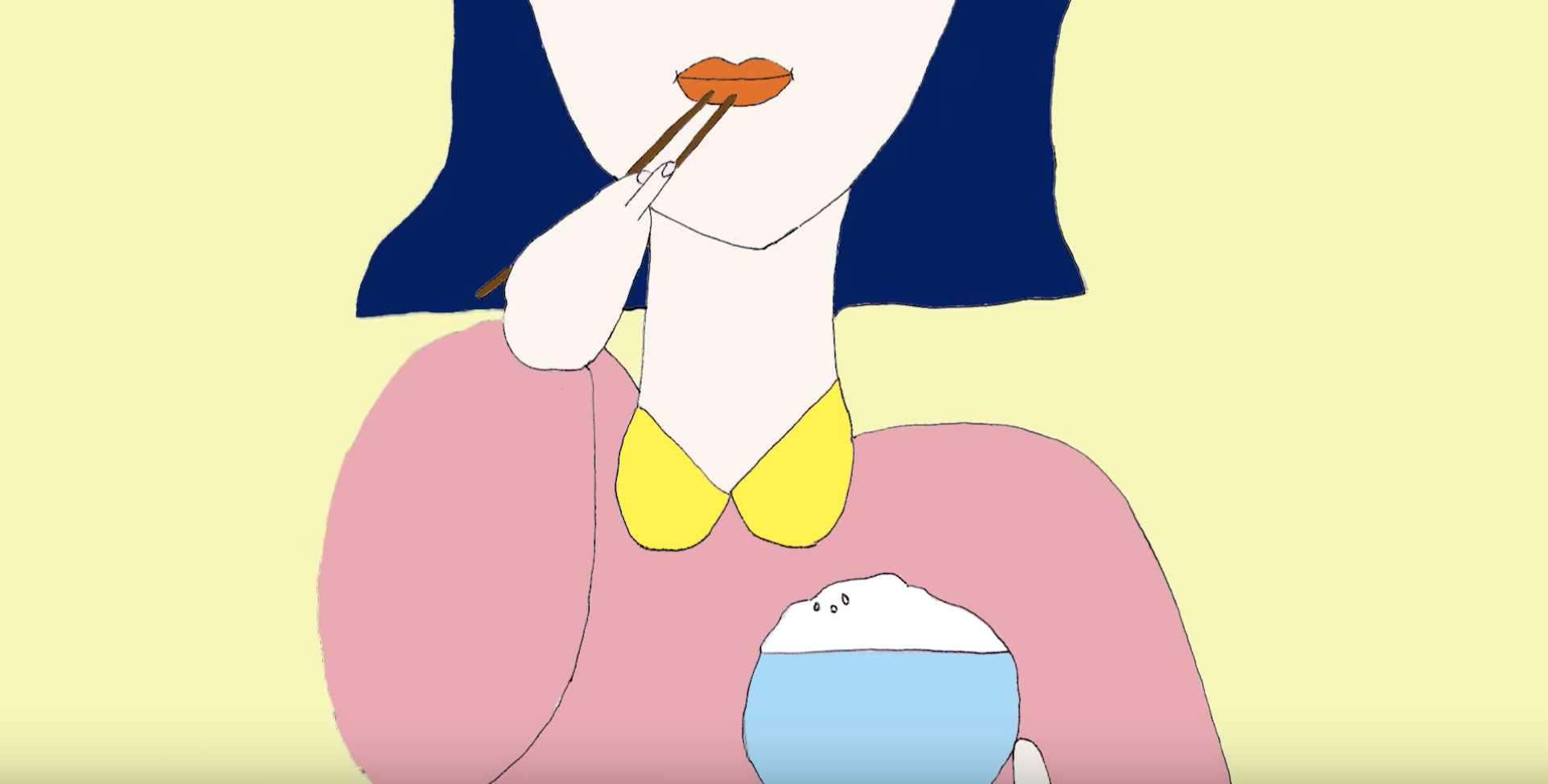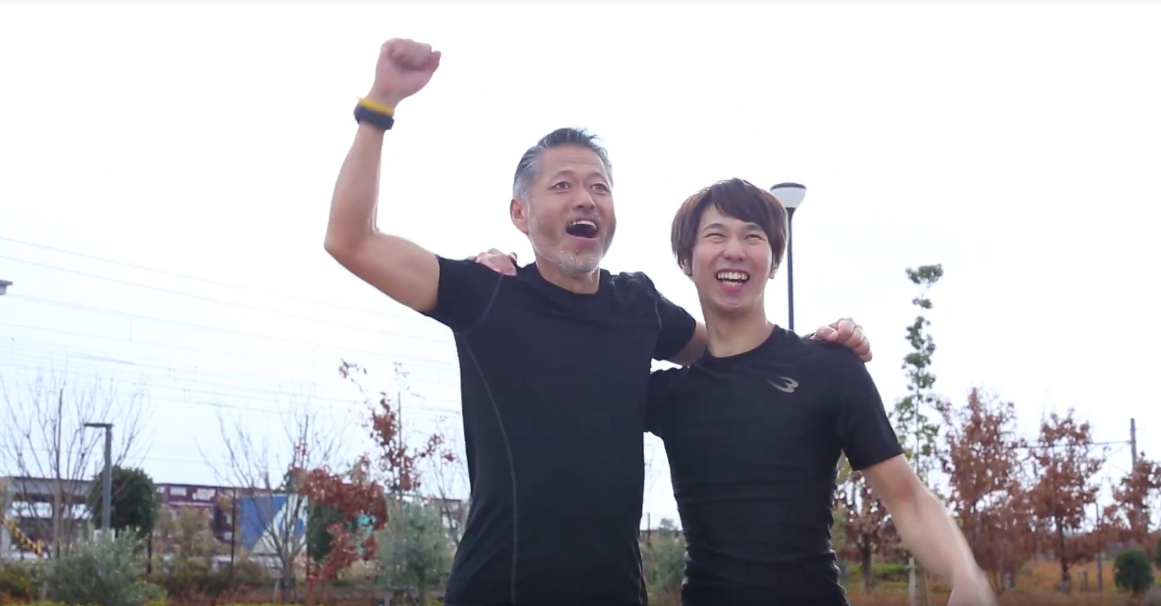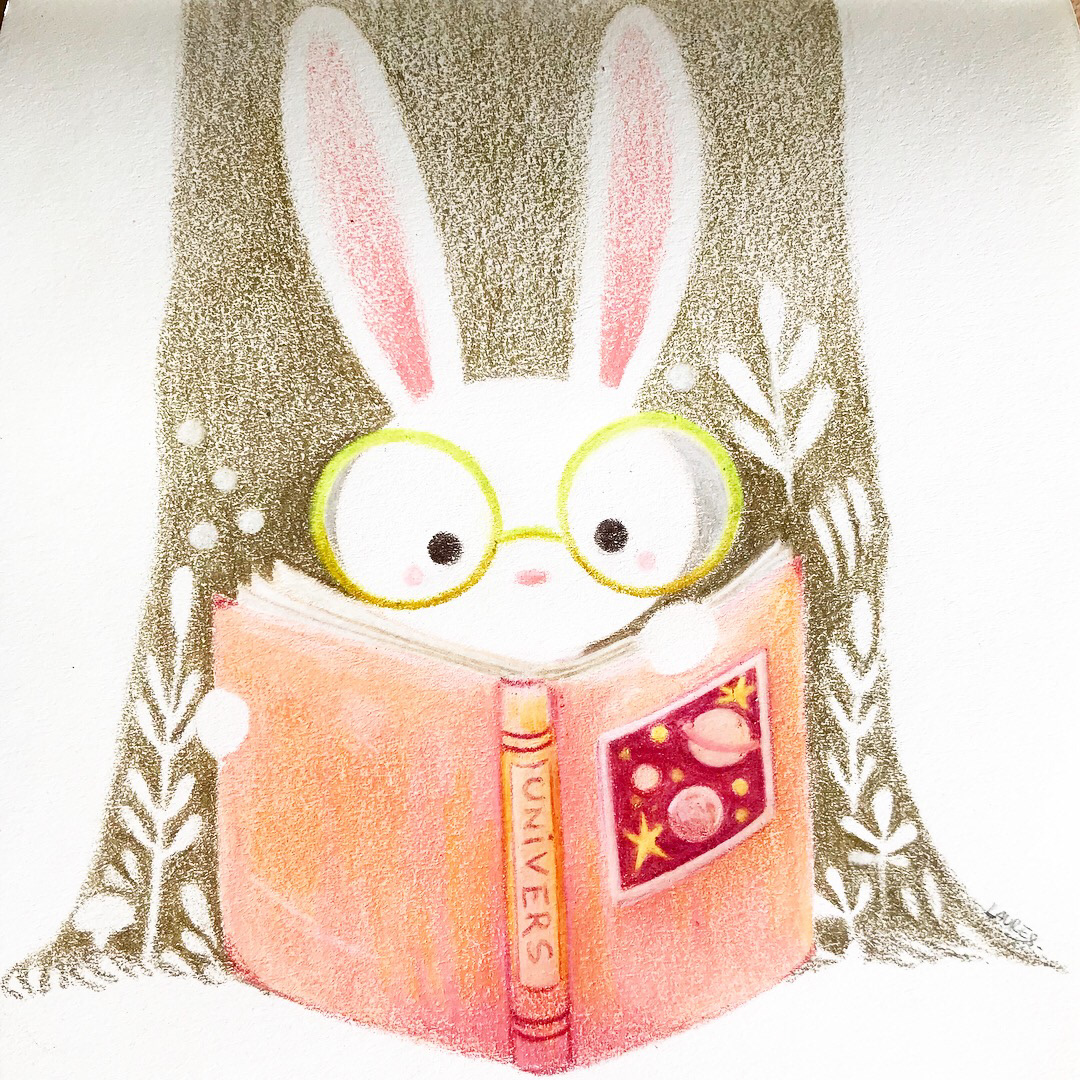Video Origin: Official YouTube Channel of Doshisha Women’s College of Liberal Arts
Translators: Mika, Jin & Sophie
The Japanese script and the English translation
*ぱく
Paku! (munch!)
その一口があなたの口に入るまで
Until that bite reaches your mouth,
生産、配達、販売、調理、
it is grown, delivered, sold, and cooked,
膨大な時間と、エネルギーと、命が詰まっています
with a tremendous amount of time, energy, and heart.
人と人が手を取り合い
Everyone connecting hand to hand,
(the character 食 is the word for “food” in Japanese, and consists of two parts: human 人 and goodness 良)
ここまで届いたご飯はロマン
The miracle of our food is so grand
輪になり囲もう愛の食卓
Let’s gather around at the table of love
食で繋がる私たち
Community connected by food
食で深まる仲間たち
Friendships deepened by food
ありがとうご飯
Thank you food!
ありがとう
Thank you!!
ありがとうみんな
Thank you everyone!
ありがとう
Thank you!!
だから感謝の気持ちを込めて
So with all of our hearts,
ごちそうさまでした
we thank you for this meal!!
About the video (the gist of the video)
(Mika) This video explains how food reaches its consumer. It teaches the audience to appreciate the food they eat and the people who helped produce it. It features a small rap/song to describe how enjoyable it is to eat good food with love and gratitude, as well as how food is able connect people.
Intended audience
Normal citizens, consumers of food
Challenges when translating the video clip, solutions and the rationales
(Mika) There were some words and phrases in Japanese that didn’t have an exact translation in English, such as “ごちそうさまでした,” so we had to think about how to express the same idea. It was also a challenge to maintain the fun and happy tone. Tone can easily be lost through translation, so we had to be careful.
(Jin) For example, the translation of “ロマン” is especailly difficult. The word is used to rhyme the line in Japanese, and it also expresses a sense of happiness about consuming food. Since there is not direct English translation, we have to understand the meaning behind the sentence and the intention of the creators. Considering the theme, we think that the phrase “ここまで届いたご飯はロマン” implies invaluableness of food which requires a lot of people’s dedication. Therefore, we think “miracle” might be an appropriate translation for ロマン.”
(Jin) Also, we had a debate over whether we should give an explanation for Kanji 食 in the subtitle. The video uses 食 as a vital symbol to express its theme, and we realize that people who are not familiar with Kanji may not notice that symbolism. Thus, we think it is necessary to explain the meaning of 食. Initially, we put a short statement after the translation. However, we realize that the speed of the video does not allow the audience to read the full explanation, and the wordiness will make the video less enjoyable. To solve this dilemma, we decide to place the comment in the video’s description rather than in subtitles.
The rap was also challenging to translate.
Where the most creativity was applied
(Mika) We were most creative when translating the rap to make it sound rhythmic and to maintain the lighthearted tone. For example, unlike raps in Japan, many raps in America contain rhymes. So, we incorporated a rhyme so that the American audience understands that the worlds are supposed to be rhythmic and like a song. In addition, we added the direct Japanese translation of the onomatopoeia of munch (paku).
(Jin) Another creativity is we use exclamation mark to indicate a change in the number of speakers.
Advice for students who are interested in translating videos
(Mika) Tone is an important aspect of language and expresses the speaker’s intent. However, it can be easily lost through translation due to cultural differences. Therefore, it is important to consider how the translation will impact the audience in order to produce the same effect as the original.
(Jin) Also, we have to understand the underlying meanings of sentences, especially when there is no appropriate direct translation. For instance, in the phrase “…命が詰まっています,” it will be awkward to translate “命“ direcety to “lives,” and such translation will distort the creators’ message to some extent. On the other hand, although “heart” is not the exact translation, it corresponds with the message and idea which the authors want to convey.
(Jin) Another advice is that we have to pay attention to details. A simple word can make the expression have a considerable change. For example, our initial translation for “輪になり囲もう愛の食卓” is “let’s gather at the table of love.” However, after receiving some suggestions from our classmates, we change it to “let’s gather around at…” Though the only difference between the two translations is the word “around,” the revised one corresponds with the theme better. The word “around” not only implies a sense of solidarity and community but also coincides with the drawing of the circle of people in the video.
Overall experience and thoughts on translation
(Sophie) Although challenging, the overall experience of translating this video allowed us to reflect on the details that have to be considered to convey a not only a similar message but also a similar tone. We learned that direct translations do not necessarily result in completely accurate translations. On a personal level, we found the process of translating this fun video to be quite enjoyable.
(Mika) I thought that it was interesting to try to translate a rap. It was enjoyable to focus on keeping the fun tone of the rap. Again, I learned through this process that tone is a really important aspect of language and should be kept in mind when translating. Therefore, it was fun coming up with ways to maintain the tone of the video, especially when the speaker changes from the narrator, song, and a group of people.
How interviewing the creators influenced the translation process?
(Mika) Speaking directly with the creators of the video gave us a clearer idea of the message they were trying to convey. It also brought attention to the smaller details they paid attention to. For example, the creators highlighted that at 0:13, the Japanese character 食 (food) is consisted of two parts: 人 (human) and 良 (goodness) in order to demonstrate that food connects people in the best ways. The creators also told us that they wanted to keep the fun tone and also the rap, so we were able to focus on that while translating.



私たちの作品を翻訳して下さってありがとうございます。難しい部分もあったかもしれませんが、的確な翻訳でわかりやすいと思います。お疲れ様でした。